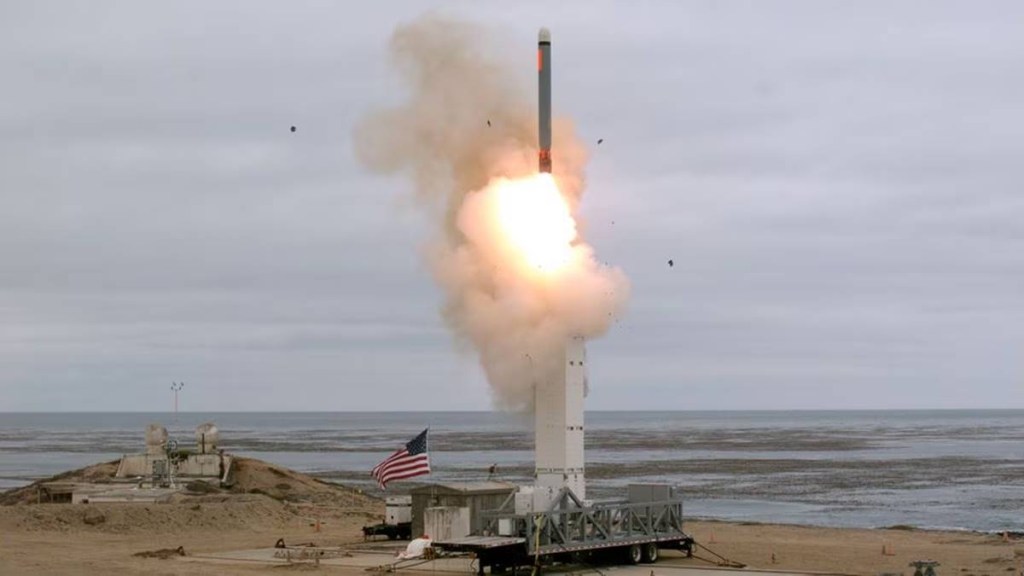By Girish Linganna
The world’s military stockpiles currently include a more significant number of operational nuclear warheads than a year ago, according to the Stockholm International Peace Research Institute (SIPRI). On the other hand, communication and relations between the world’s top nuclear countries are at their lowest ebb in decades.
According to the independent institute’s annual report on the state of Arms and Disarmament published in June, as of January 2023, there were an estimated 9,576 potential warheads in military stocks. This number shows an increase of 86 extra munitions produced since January 2022.
Estimates provided by SIPRI indicate the total number of nuclear weapons in stockpiles worldwide is around 12,512. Warheads that have been deactivated and are scheduled to be destroyed are included in the global stockpile. Based on the findings, global efforts to reduce the number of operable warheads have stalled and their total count is growing again.
The SIPRI director says that, during this period of extreme geopolitical tensions and mistrust between nations with broken— or barely functional—communication lines between nuclear-armed rivals, the risk of a miscalculation, misunderstanding, or accident are incredibly high. He said there was an urgent need to bolster international nuclear arms control and revive atomic diplomacy.
It was estimated that approximately 2,000 of the 9,576 potential warheads were kept in a condition of high operational alert. Most of these potential warheads belonged to Russia or the United States. That implies that they are attached to missiles or stockpiled at air bases with nuclear bombers capable of transporting them. Alternatively, they could have been held at nuclear bomber factories.
Nine countries have nuclear weapons—the US, UK, Russia, France, Israel, China, India, Pakistan and North Korea. According to SIPRI, the US and Russia own roughly 90 per cent of all nuclear weapons.
New START N-Arms Pact
Moscow and Washington are once again in all but the most direct opposition due to Russia’s limited invasion of Ukraine, which began in February last year. This conflict has rekindled tensions between the two countries. In February of this year, Russia withdrew from the New START nuclear arms control deal, which was the final surviving nuclear arms control pact between the US and Russia. The New START agreement that was signed in 2010 made it possible to inspect weapons installations and exchange information regarding the placement of intercontinental and submarine ballistic missiles.
Because the US maintains nuclear weapons in Europe, Russia is providing Belarus with nuclear weapons to counteract this threat. Vladimir Putin and Alexander Lukashenko, presidents of Russia and Belarus, met in Sochi. The Russian leader said that, in about a month, the Russian Federation would begin to deploy tactical nuclear weapons in Belarus. “On the most sensitive issues, everything is going according to plan. As you know, on July 7-8, the preparation of the relevant facilities will be completed and we’ll immediately begin measures related to the deployment of the relevant types of weapons on your territory,” Putin said. Lukashenko had stated in May that the Republic of Belarus had prepared “storage sites and other objects” for a nuclear arsenal and that the movement of nuclear weapons had begun.
Kazakhstan should also join the Union State of Russia and Belarus, according to Lukashenko and then, “there’ll be nuclear weapons for everyone”. He made a similar proposal to other nations, noting that “we have an exceptional opportunity to unite”.
Although the SIPRI research reveals that the size of each nation’s nuclear arsenal or the number of deployable warheads remained largely unchanged in 2022, the transparency of both countries’ nuclear forces has decreased. A nuclear arms race was fought between the US and its competitor during the Cold War, the erstwhile Soviet Union. This race went on from World War II until the collapse of the Soviet Union almost 30 years ago. The Ukraine crisis has driven relations between the two superpowers to their lowest point since the disintegration of the Soviet Union.
The SIPRI research indicates that China’s nuclear arsenal grew in size from 350 warheads in January 2022 to 410 warheads in January 2023 and is expected to keep growing further in the coming years.
It is estimated that the arsenal of nuclear weapons held by the UK did not change in 2022. It was declared in 2021 by the UK government that they would expand their limit from 225 to 260 warheads, which indicates that the stockpile of warheads will grow in the years to come.
Israel, which does not publicly acknowledge having nuclear capabilities, is growing its arsenal. The North Korean government continues to consider its nuclear weapons development project essential to its overall national defence policy.
Both India and Pakistan give the impression of expanding the size of their nuclear arsenals. According to the source, even while Pakistan is keeping an eye on India, India seems to be concentrating on developing longer-range weapons, particularly those capable of hitting targets in China. India possesses 164 warheads—far less than China’s 410 and Pakistan’s 170.
The author is Bangalore based Defence, Aerospace & Political analyst.
Disclaimer: Views expressed are personal and do not reflect the official position or policy of Financial Express Online. Reproducing this content without permission is prohibited.
